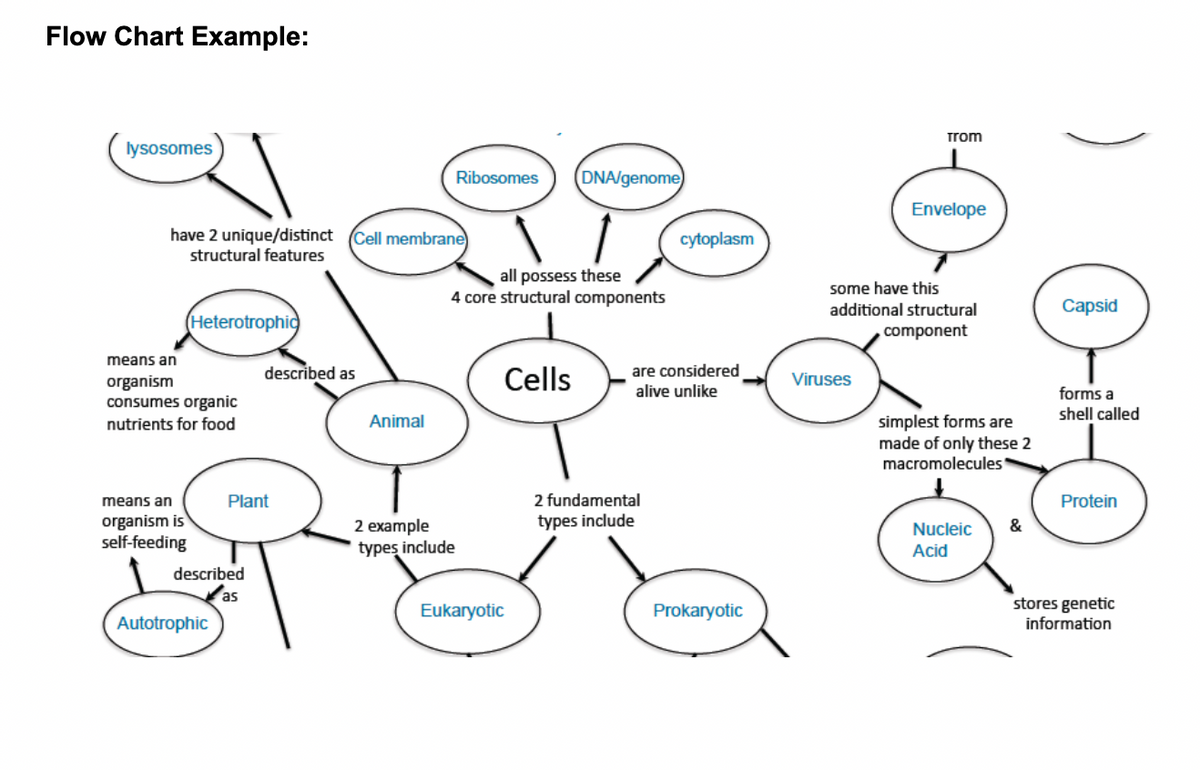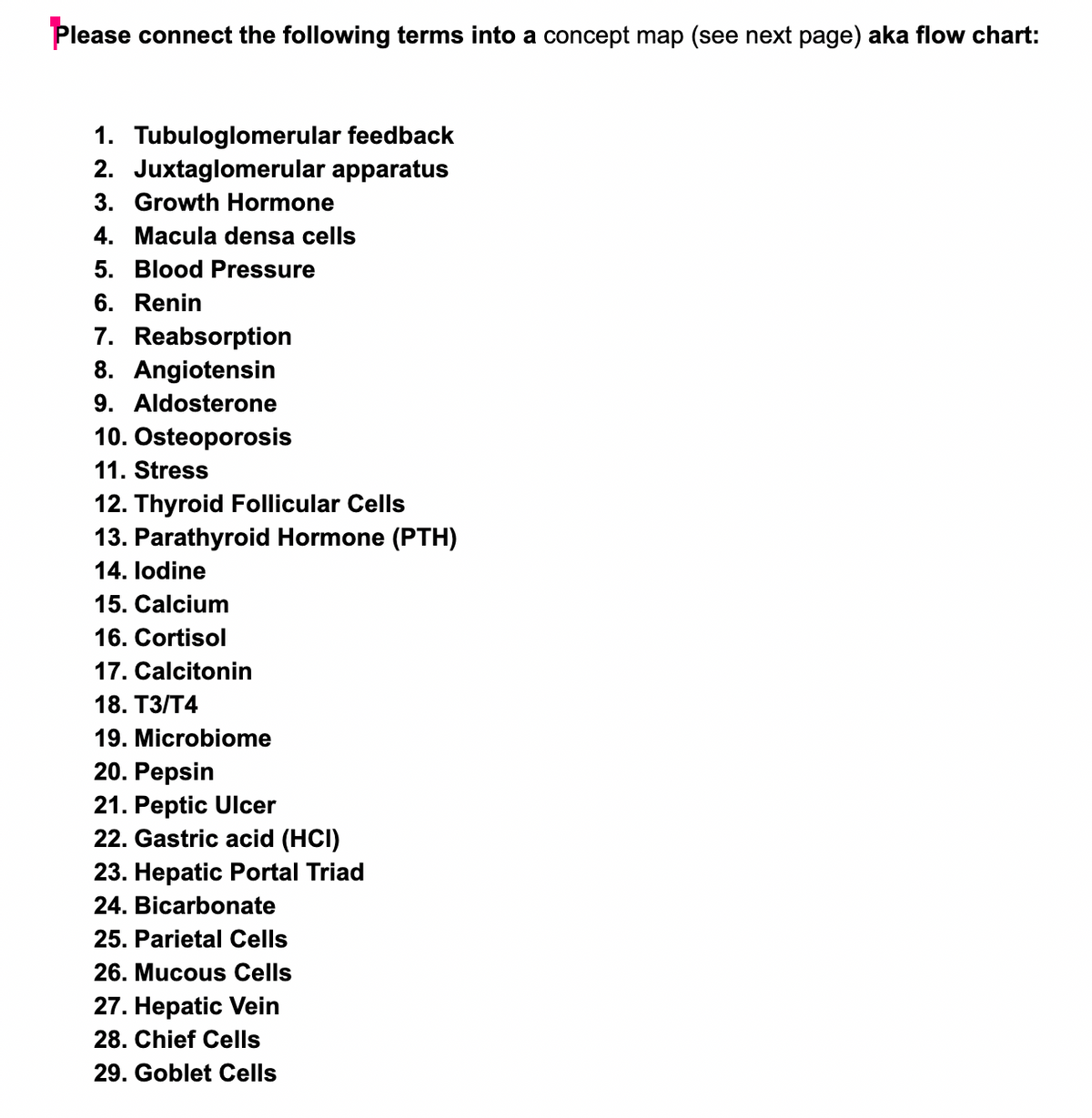Chapter25: Diuretics And Medications Used For Urinary System Disorders
Section: Chapter Questions
Problem 23RQ
Related questions
Question
Please add words in between the terms to help explain how they are connected like in the example I provided! Thank you!

Transcribed Image Text:Flow Chart Example:
Trom
lysosomes
Ribosomes
DNA/genome
Envelope
have 2 unique/distinct Cell membrane
structural features
cytoplasm
all possess these
4 core structural components
some have this
additional structural
component
Capsid
Heterotrophic
means an
are considered
alive unlike
described as
Cells
Viruses
organism
consumes organic
nutrients for food
forms a
shell called
simplest forms are
made of only these 2
macromolecules
Animal
means an
Plant
2 fundamental
Protein
organism is
self-feeding
2 example
types include
&
Nucleic
typeş include
Acid
described
as
Autotrophic
Eukaryotic
Prokaryotic
stores genetic
information

Transcribed Image Text:Please connect the following terms into a concept map (see next page) aka flow chart:
1. Tubuloglomerular feedback
2. Juxtaglomerular apparatus
3. Growth Hormone
4. Macula densa cells
5. Blood Pressure
6. Renin
7. Reabsorption
8. Angiotensin
9. Aldosterone
10. Osteoporosis
11. Stress
12. Thyroid Follicular Cells
13. Parathyroid Hormone (PTH)
14. lodine
15. Calcium
16. Cortisol
17. Calcitonin
18. ТЗ/Т4
19. Microbiome
20. Pepsin
21. Peptic Ulcer
22. Gastric acid (HCI)
23. Hepatic Portal Triad
24. Bicarbonate
25. Parietal Cells
26. Mucous Cells
27. Hepatic Vein
28. Chief Cells
29. Goblet Cells
Expert Solution
This question has been solved!
Explore an expertly crafted, step-by-step solution for a thorough understanding of key concepts.
Step by step
Solved in 2 steps with 1 images

Knowledge Booster
Learn more about
Need a deep-dive on the concept behind this application? Look no further. Learn more about this topic, biology and related others by exploring similar questions and additional content below.Recommended textbooks for you


Biology (MindTap Course List)
Biology
ISBN:
9781337392938
Author:
Eldra Solomon, Charles Martin, Diana W. Martin, Linda R. Berg
Publisher:
Cengage Learning



Biology (MindTap Course List)
Biology
ISBN:
9781337392938
Author:
Eldra Solomon, Charles Martin, Diana W. Martin, Linda R. Berg
Publisher:
Cengage Learning
